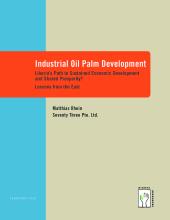/ library resources
Showing items 1 through 9 of 76.The purpose of this paper is to contribute to Liberia’s debate on economic policy, specifically, recent efforts around industrial-scale palm oil development against the context of the wider role of the rural sector in economic development.
NEW YORK (17 September, 2014)—US$1.64 billion, the funds pledged to date by three major multi-lateral initiatives at the United Nations and World Bank in preparing for the evolving REDD+ carbon market, would expand the demarcation, registration, and titling of rights of the local communities and
In recent years, there has been growing attention and effort towards securing the formal, legal recognition of land rights for Indigenous Peoples and local communities.
This Guide aims to inform companies that hold land or purchase land directly from companies that hold land.
The land registration system in Kenya was established in 1897 to support land registration for white settlers who had come into the country during the 19th Century.
This research gives an evaluation of Tana delta with regard to areas that are suitable for rice growing. The study area lies on the Eastern delta area of the Tana river of which 16000 hectares have been earmarked for commercial rice farming.
Agriculture is the backbone of Kenya’s economy. Agriculture in Kenya is characterized by low productivity due to low external inputs, lack of good farming practices, soil erosion, and other losses.
The Earth’s land surface is a key component of its climate system. Terrestrial plants, animals and human beings rely on the land surface for sustenance and existence; as such, its prevailing conditions and properties are essential to terrestrial life.
Pagination
Land Library Search
Through our robust search engine, you can search for any item of the over 73,000 highly curated resources in the Land Library.
If you would like to find an overview of what is possible, feel free to peruse the Search Guide.








